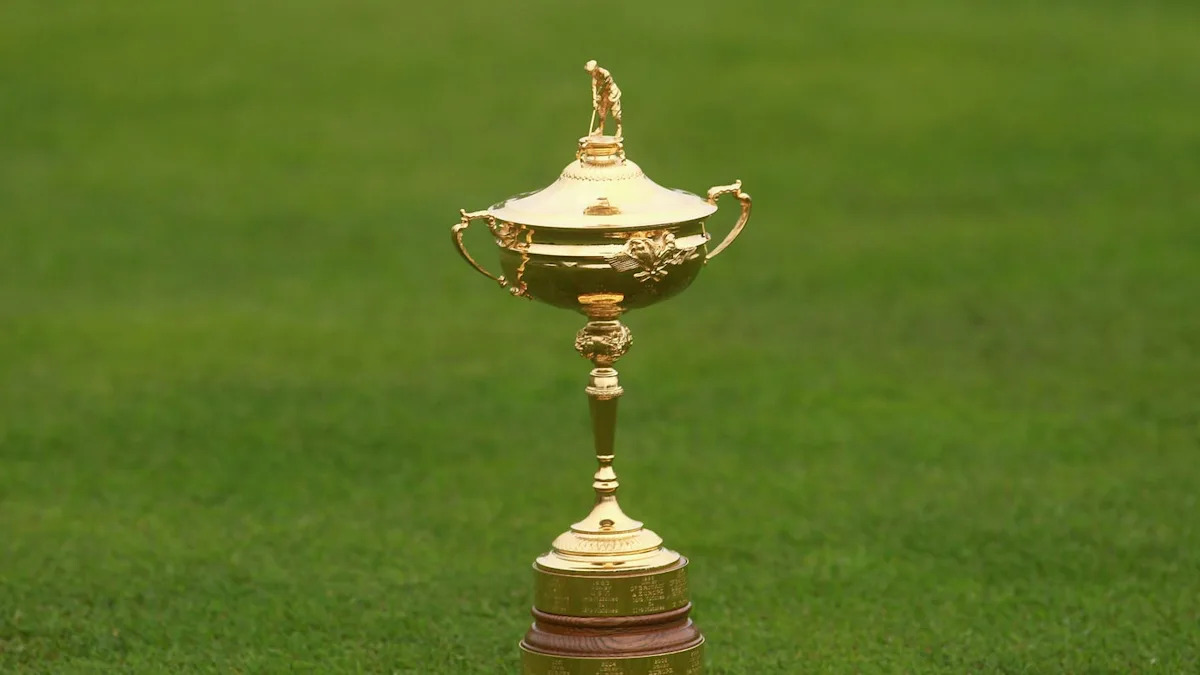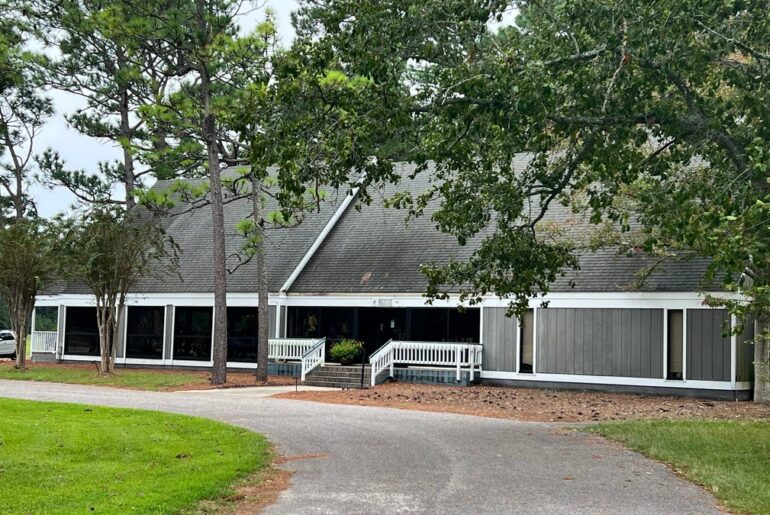“Hearst Magazines and Yahoo may earn commission or revenue on some items through these links.”
The Ryder Cup is one of golf’s most celebrated events, held every two years and featuring two teams of 12 top golfers from Europe and the United States. The tournament’s iconic gold trophy takes its name from the same English businessman and golf enthusiast who launched the competition itself nearly a century ago. Here, a brief history on the Ryder Cup trophy:
How did the Ryder Cup get its name?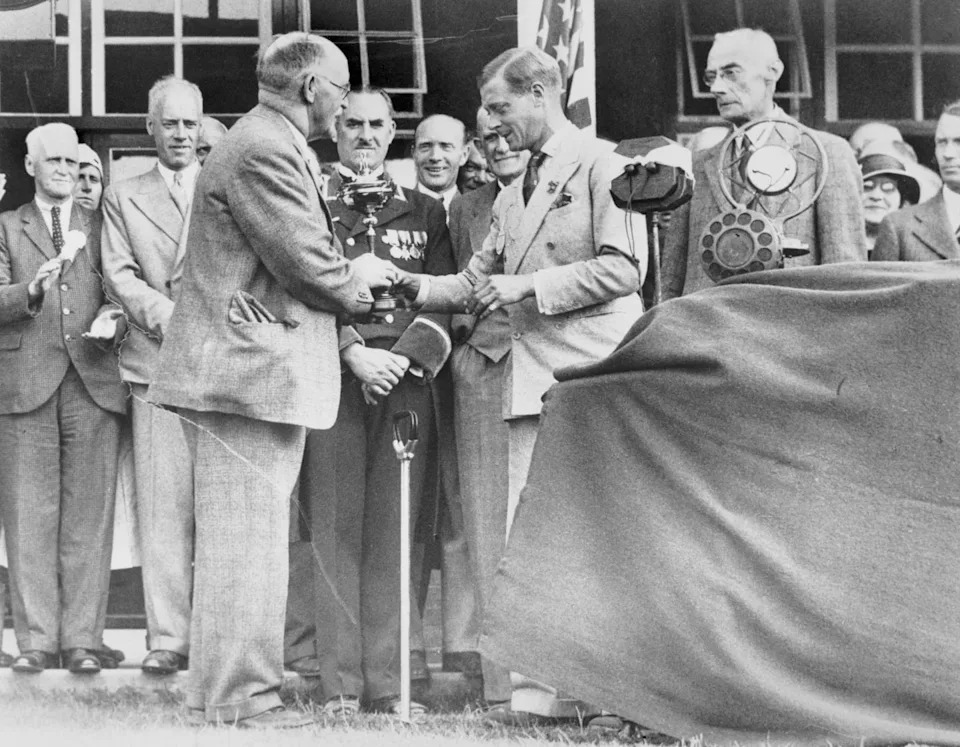
J.H. Taylor receives the trophy from the Prince of Wales after Britain defeats the U.S. in 1933. Bettmann – Getty Images
The biennial competition is named after Samuel Ryder, a seed merchant originally from Manchester who later moved to St. Albans, just north of London. Ryder didn’t even get into golf until later in life, more as a hobby to improve his work/life balance. It didn’t take long for Ryder to fall in love with the game.
By the 1920s, Ryder found himself financing international competition between American and British professionals. In 1927, the first official Ryder Cup was hosted at the Worcester Country Club in Massachusetts. (Initially, the Ryder Cup was played between Britain and the U.S. In 1973, Britain’s official team name was changed to “Great Britain and Ireland,” later expanding to Europe in 1979, 14 years before the European Union was founded.)
When was the first Ryder Cup trophy made?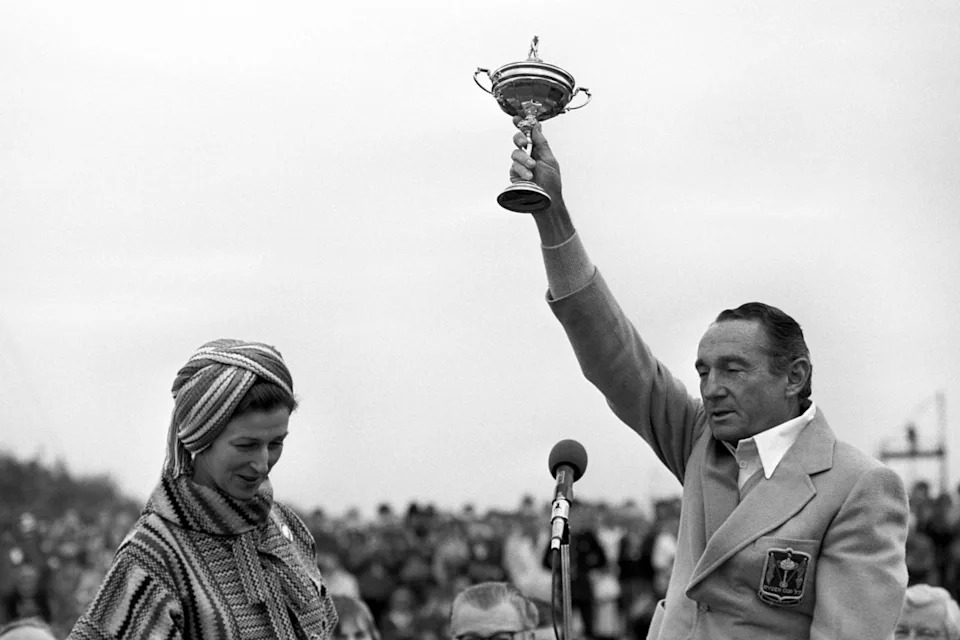
American Ryder Cup captain Dow Finsterwald lifts the trophy after receiving it from Princess Alexandra following the U.S. team’s victory over Britain and Ireland in 1973. PA Images – Getty Images
Samuel Ryder commissioned Mappin & Webb Co., an English jewelry company dating back to 1775, to make the trophy for £250 at the time. (Using the Bank of England inflation calculator, that’s roughly $18,520 in 2025.) When Samuel Ryder presented the trophy in 1927, it was meant to symbolize the event’s new status in the golf world. Since then, the same trophy has been presented at every Ryder Cup.
What does the trophy look like?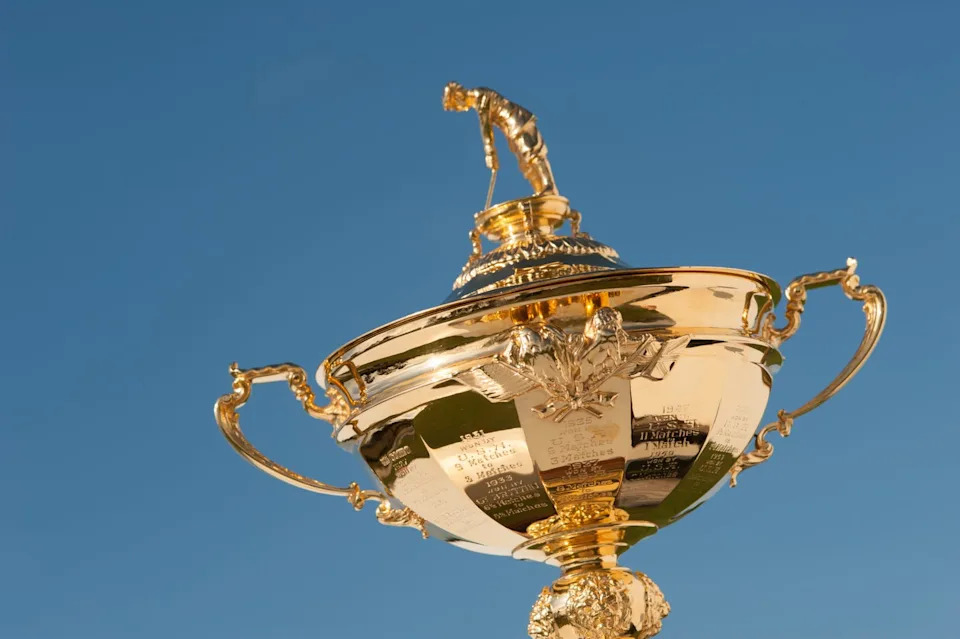
A close-up of the Ryder Cup trophy with engravings of the winners and their scorelines. Montana Pritchard/PGA of America – Getty Images
Standing 17 inches tall and measuring nine inches from handle to handle, the trophy is made out of gold and weighs approximately four pounds. Its design features a classical chalice shape with ornate handles and a lid. Atop the trophy is a small figure of a golfer, modeled on Abe Mitchell, a professional golfer who was Ryder’s personal instructor.
According to BBC Sport, Mitchell was supposed to play in the inaugural 1927 Ryder Cup in Massachusetts. Reports conflict about why he didn’t make it in the end, whether he had appendicitis or anxiety, but Mitchell would go on to play in the next three Ryder Cups, helping Britain defeat the U.S. in 1929 in Leeds and again at Southport & Ainsdale in 1933.
Do winners keep the trophy?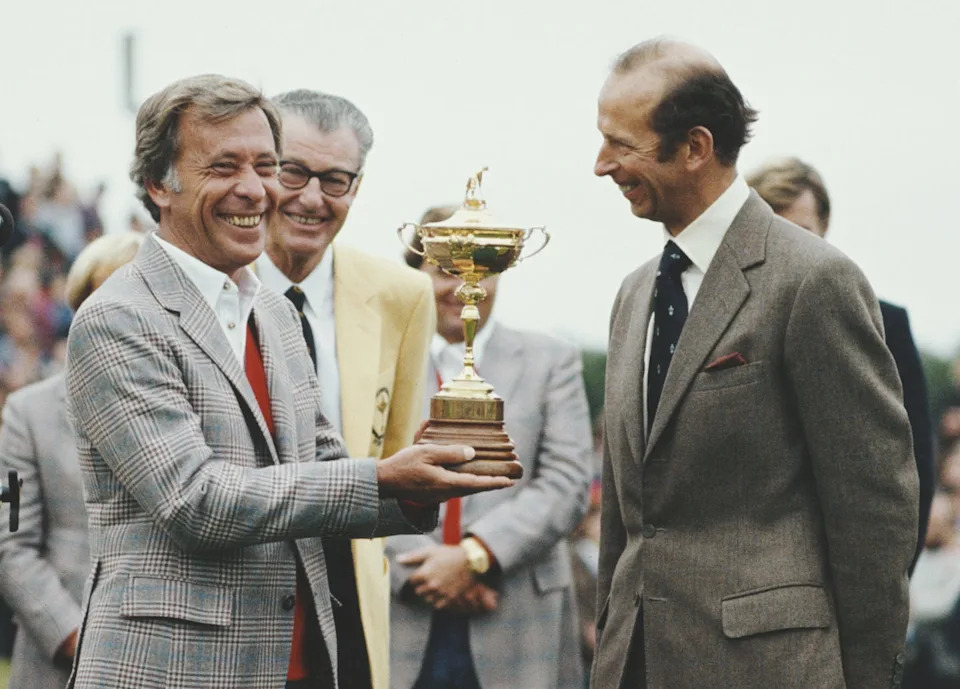
United States captain Dave Marr accepts the Ryder Cup trophy from the Duke of Kent after his team defeated Europe in the 24th Ryder Cup in Surrey in 1981. Bob Martin – Getty Images
Unlike some sporting competitions where multiple copies are made, the Ryder Cup trophy itself does not permanently change hands. (This is also a similar practice to the Claret Jug in The British Open since 1928.) The original remains in the care of the tournament organizers, but winning teams are presented with the cup during the victory ceremony.
Each winning side also receives a replica to display in their home country, typically at their national golf association’s headquarters. Players and captains sometimes are given smaller replicas to commemorate their involvement. This ensures the tradition of the original trophy is preserved while still allowing victors to celebrate with their own version.
Where is the Ryder Cup trophy kept now?
The Ryder Cup trophy is seen at the Bethpage Black Course in 2025. Gary Kellner – Getty Images
The original Ryder Cup trophy is held by the Professional Golfers’ Association (PGA) in the United Kingdom, which was one of the founding organizers of the tournament. Between competitions, it is often displayed at events, promotional appearances, and exhibitions tied to the history of the game. (For example, the Ryder Cup trophy has been showcased at the PGA Golf Club’s clubhouse in Florida when on tour in the past.) Smaller replicas are kept by the PGA of America and by previous winning teams for public display and fan engagement. Though the trophy travels extensively, its permanent home is with the PGA in England.
You Might Also Like

